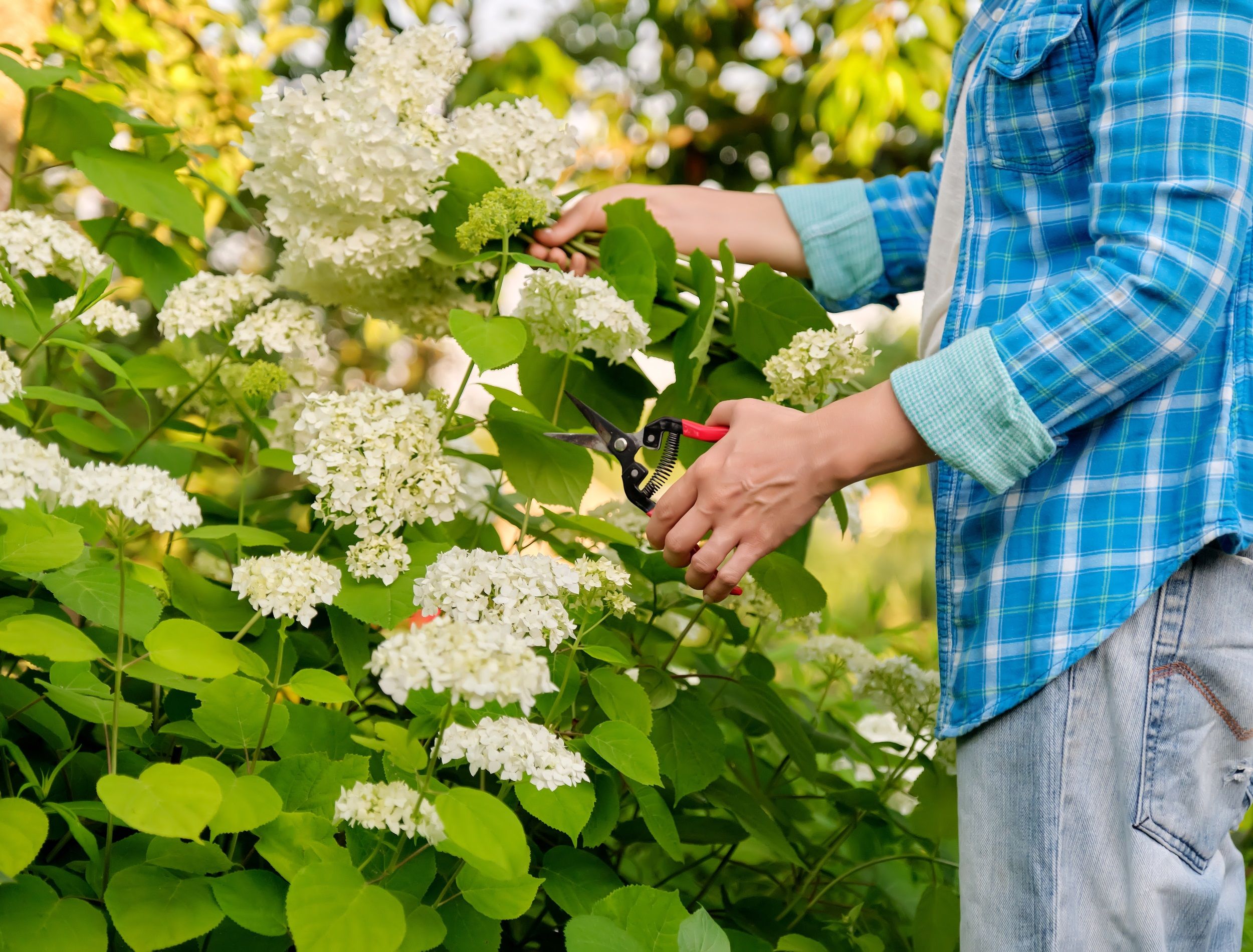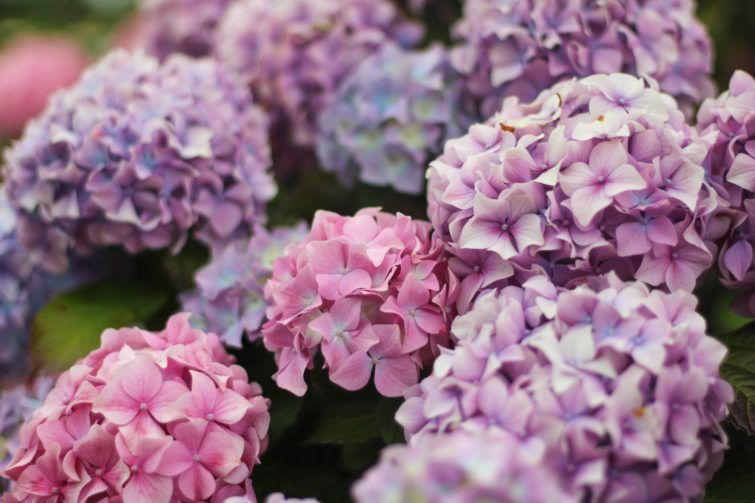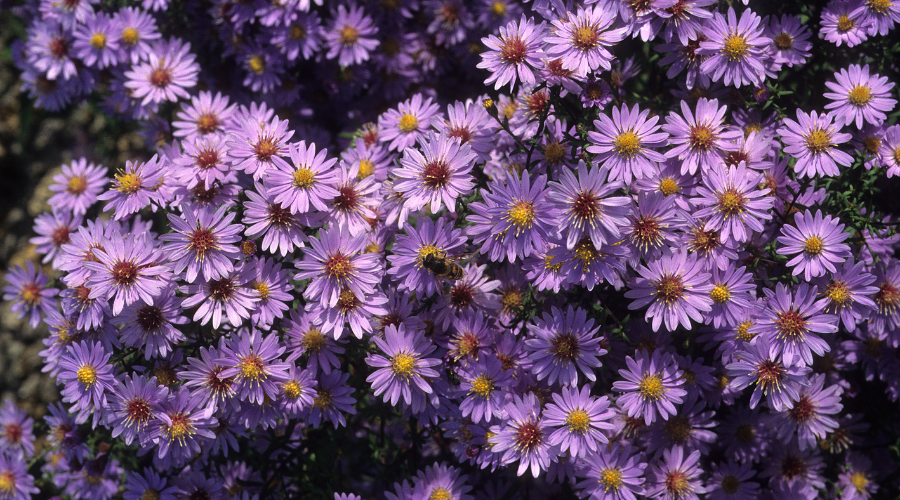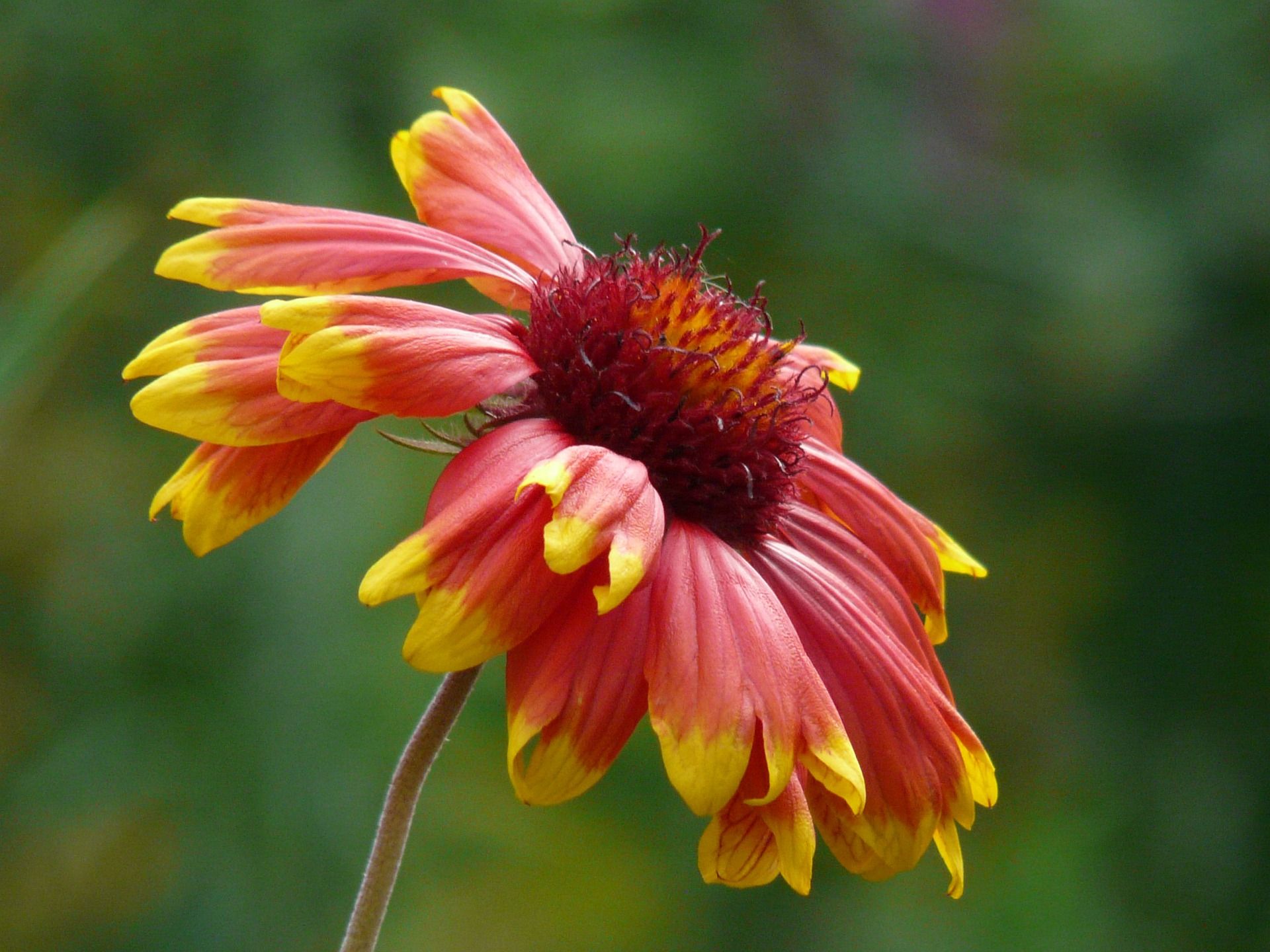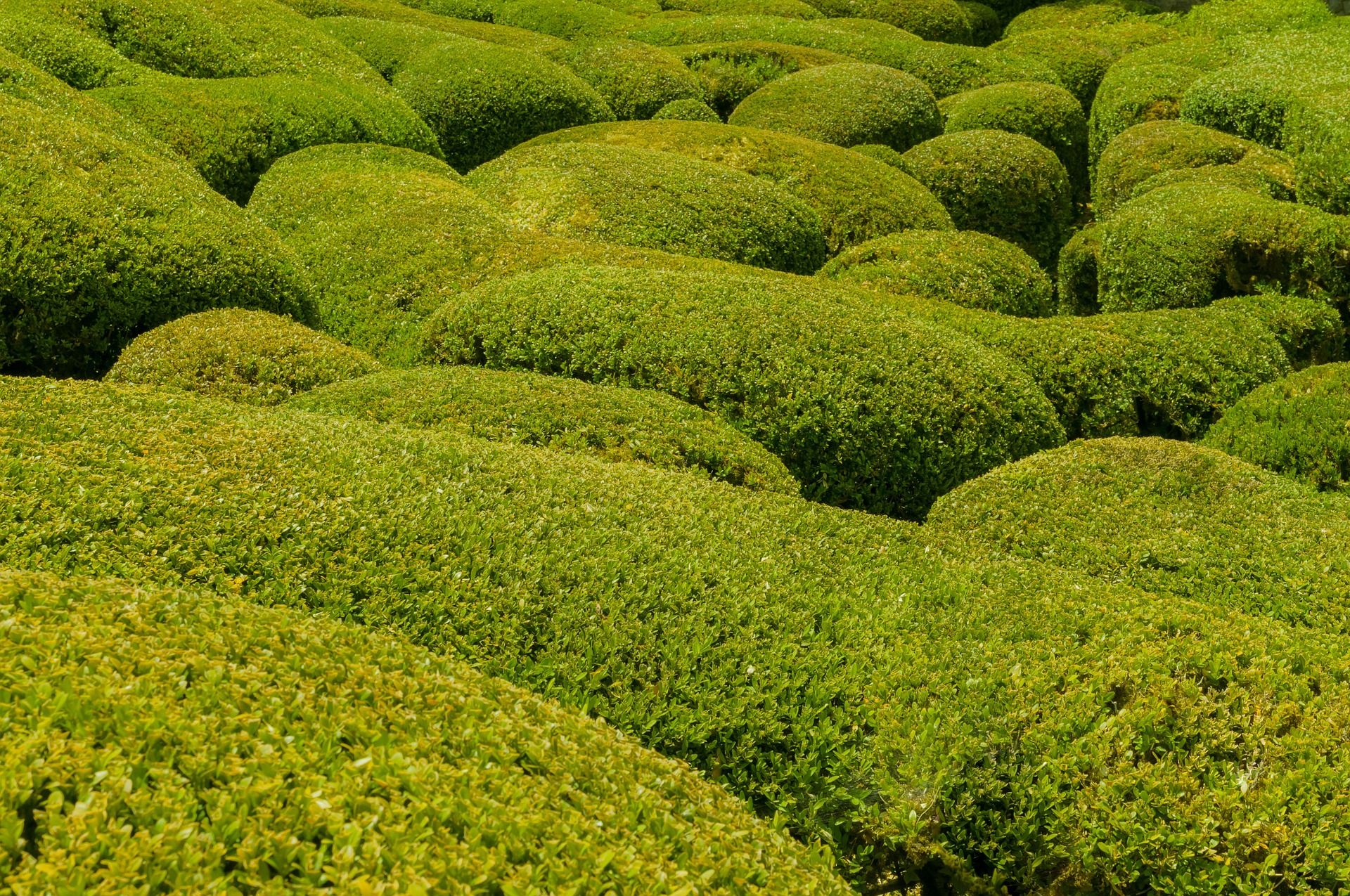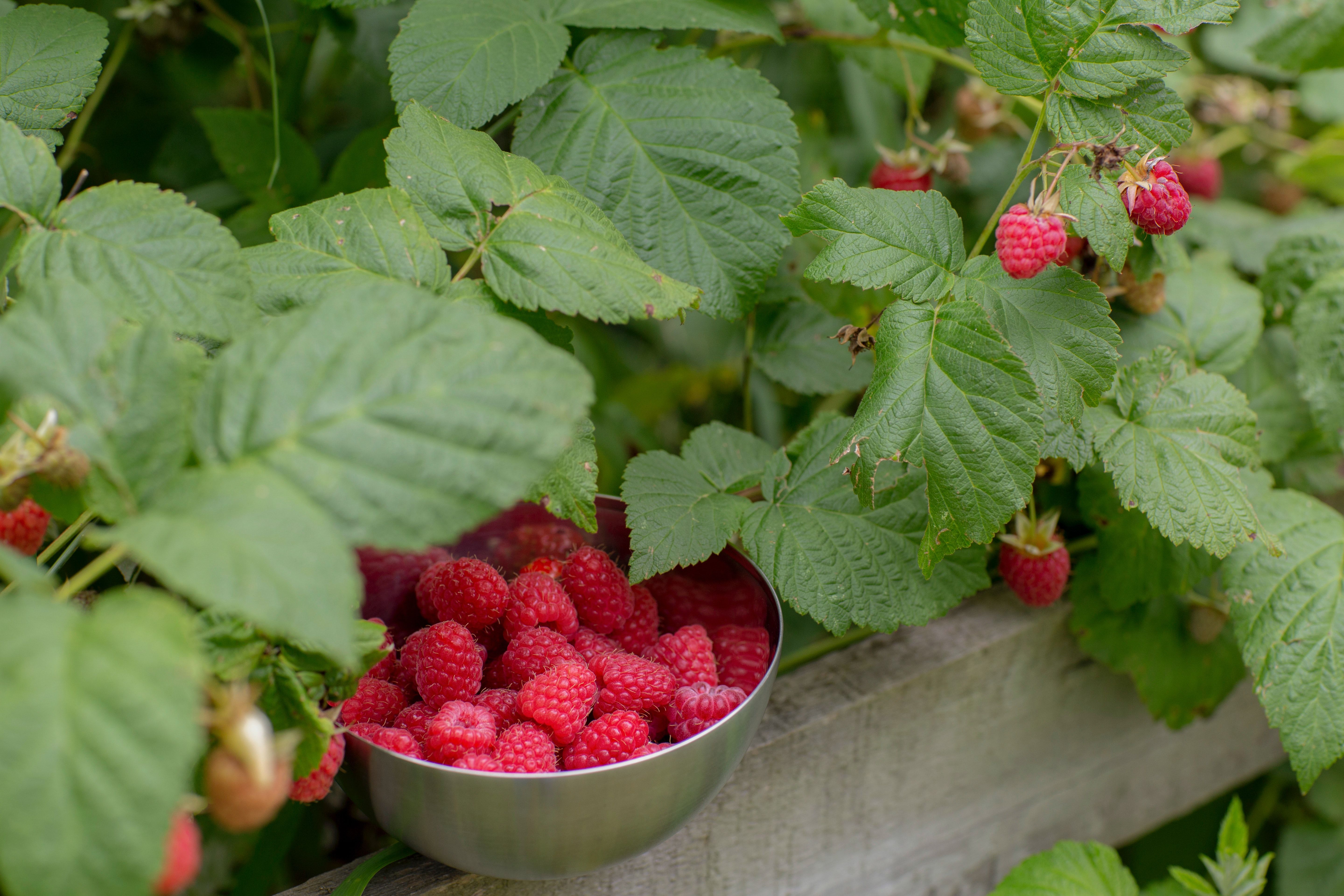An encouraging and healthy way to keep your plants happy is by pruning old branches and stems. It can increase bloom and berry yields and improve the aesthetic and safety of your land. To prune your plants, use sharp scissors for soft stems or pruning shears for thicker stems and branches.
Before pruning, ensure that your plants are watered well to support new growth and reduce stress. Remember to only prune plants once they are finished flowering, and clean your tools before and after use. If you find your pruning shears are rusted and dirty, you can easily remove rust and clean your pruning shears to keep your tools well-maintained.
With that being said, different plants require pruning in different seasons. With this simple guide, you will discover the five plants that are best to prune in late summer.
Hydrangeas
Image credits: Connor Moyle via Unsplash
Hydrangeas are an easy-to-grow perennial that blooms lush flowers each summer but, this flowering plant can take over your garden if you let it.
Pruning hydrangea is the perfect solution for size control and to encourage a bountiful blooming season. Pruning hydrangeas in late summer is the perfect time to avoid disrupting the plant's growth cycle.
Because there are two types of hydrangeas, mophead and lacecap, it's important to determine which you have in your garden in order to prune them each properly. If you would like to learn more about pruning hydrangeas, in particular, this guide on how to prune hydrangeas will teach you everything you need to know on pruning on old wood versus new wood and which variety requires which type of trim.
Asters
Image credits: Michel VIARD via Canva
Asters are beautiful flowering plants that bloom in Autumn with vibrant pink or purple hues. They grow fast, so if you desire them to have a particular shape, pruning is extremely helpful. Pruning in late summer will promote the health needed for healthy autumn blooms.
Asters do not require pruning to flower. However, it can encourage more blooms and bring color to your land. Make sure to complete your pruning before budding happens, in late summer to early autumn.
Helenium (Sneezeweed)
Image credits: Hanz via Pixabay
Many perennial and annual flowers, such as the sneezeweed, can encourage new growth after deadheading (removing wilted flower heads) in late Summer. By deadheading, you can allow the plant to focus its energy on new and existing blossoms instead of expelling its energy into producing seeds.
Sneezeweed should be pruned in both early and late summer. This helps delay the blooms so you can enjoy their beauty later in the summer months.
Additionally, this will allow your garden, window boxes, and hanging baskets to stay colorful for longer.
Boxwood
Image credits: Pattern Pictures via Pixabay
Often used to create dynamic shapes and garden hedges, you can prune boxwood in late summer to reinforce the structure. Pruning will help keep boxwood in your desired shape, stimulate compact growth, and allow cuts to harden before frost.
Boxwood is the perfect plant to add greenery to a yard when most summer blooms begin to wilt and lose color. As an extra plus, boxwood can be a great shrub for privacy in your yard.
Raspberries
Image credits: Evie Fjord via Unsplash
Raspberry plants are floricanes and only produce fruit in the second year of growth. When a cane has finished its fruiting season, and you have enjoyed its plentiful harvest, remove the cane as it will not fruit the following season.
Raspberry plants send up new canes each year and are an excellent plant to have on your property. Removing old canes can stimulate new growth and increase berry yields for the following year.
Pruning Finale!
Before pruning your plants, conduct a little research to verify which season is the best for each species. Choosing the correct season will promote health and limit stress and damage. Hopefully, by planting these five flowers to prune in late summer, you may become more conscious about when you cut your crops.
Remember, for plants that require pruning in late summer, it’s crucial to finish pruning a few weeks before the season's first frost. If you would like to learn more about specific pruning, this guide on types of pruning cuts and when to use them will be perfect for you.
So, did you prune in late Summer? What were your end results? Let us know in the comments below!

